Search
Did you mean: Copan?
Search Results
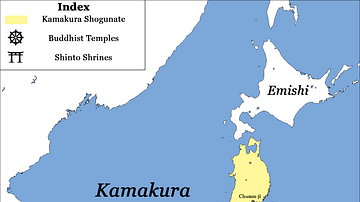
Image
Major Temples and Shrines of Japan circa 1200 CE, Kamakura Shogunate
This map depicts all major Buddhist temples and Shinto shrines of Japan around the year 1200 CE. Notice that many renowned temples (such as the famous Kinkaju-ji) have not yet been built at that time. The map highlights the city of Kamakura...
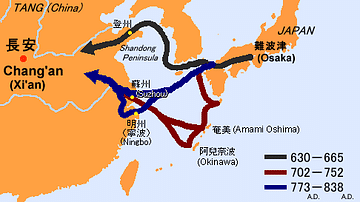
Image
Sea Routes from Ancient Japan to China
A map illustrating possible sea routes used for political and cultural embassies from ancient Japan to Tang Dynasty China.
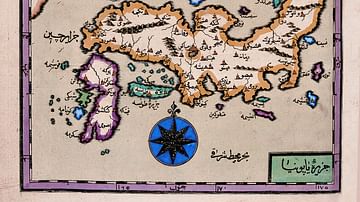
Image
Map of Japan by Katip Çelebi
Map of Japan by Katip Çelebi (d. 1657), geographer of the Ottoman Empire, in his famous geographic dictionary, Kitab-ı Cihannüma (View of the World).
Cambridge University Library.

Image
Agata Shrine in Uji, Japan
The Agata were tribal units under the reign of the Yamato court (c. 300-650 CE), which held sway over western Japan. Particularly in the Nara and Kyoto areas, the agata played important political and ceremonial roles. The name of the Agata...
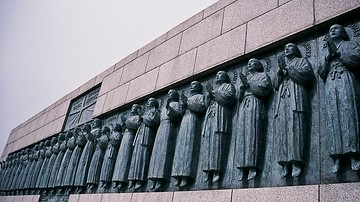
Image
Memorial of the 26 Martyrs of Japan in Nagasaki
Memorial of the 26 Martyrs of Japan in Nagasaki, who were executed for their Christian beliefs in 1597, after Japan had outlawed the religion. Canonised by the Catholic Church, the martyrs were tortured before their execution, with the event...
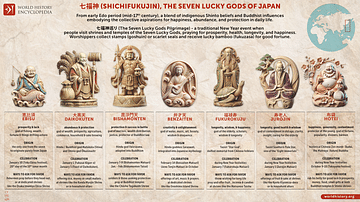
Image
The Seven Lucky Gods of Japan
An infographic about Shichifukujin, or the Seven Lucky Gods (Seven Gods of Fortune) of Japan, a revered group of deities associated with prosperity and good fortune. Each god represents different blessings, including wealth, happiness, and...
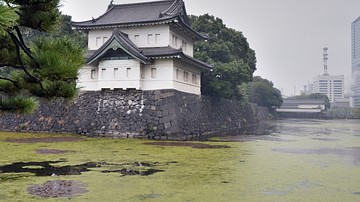
Definition
Edo Period
The Edo period refers to the years from 1603 until 1868 when the Tokugawa family ruled Japan. The era is named after the city of Edo, modern-day Tokyo, where the Tokugawa shogunate had its government. It is also sometimes referred to as the...
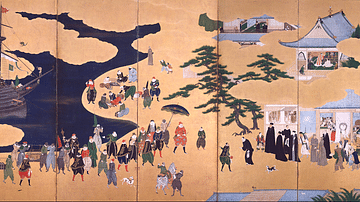
Image
The Portuguese in Japan
A Japanese painted screen by Kanō Naizen showing a Portuguese carrack ship and traders. The Portuguese controlled the trading port of Nagasaki from c. 1571 to 1639. (Kobe City Museum, Japan)
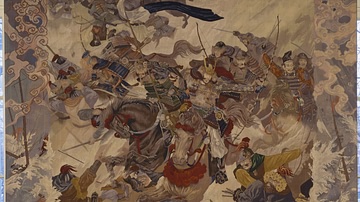
Image
The Mongol Invasion of Japan
"The Mongol Invasion" is a Japanese silk tapestry by Kawashima Jimbei II (Japanese, 1853 - 1910 CE), based on an oil painting by Morizumo Yugyo (1854 - 1927 CE). The painting depicts the Mongol Empire's failed invasions of Japan in in 1274...

Quiz
Feudal Japan
Feudal Japan Medieval Regent Figurehead Shinto Clan Court Zen Buddhism Daimyo Samurai Shogun Bushido Ronin Wako Kana system Za Kamikaze